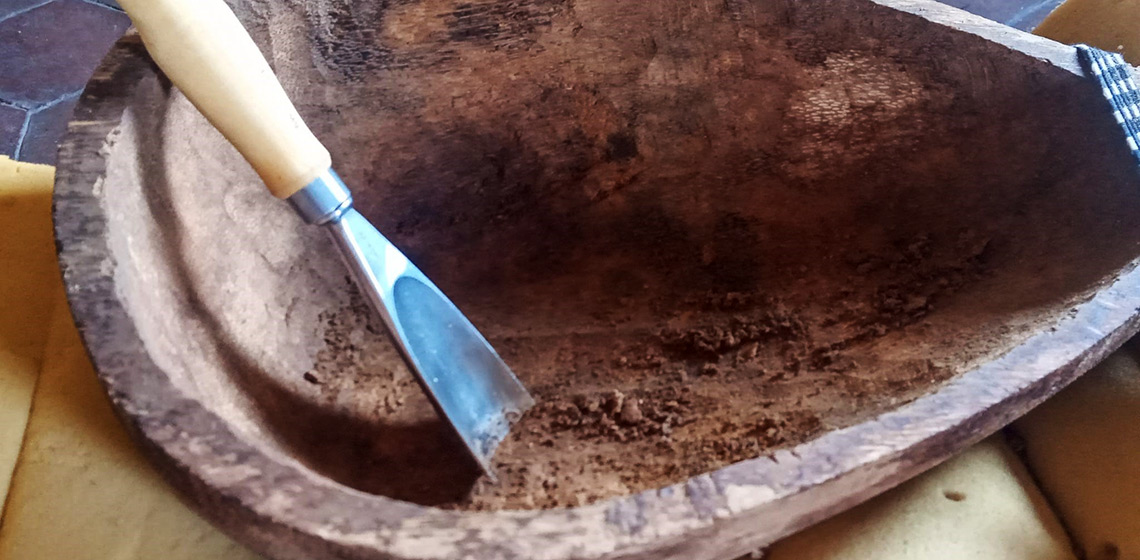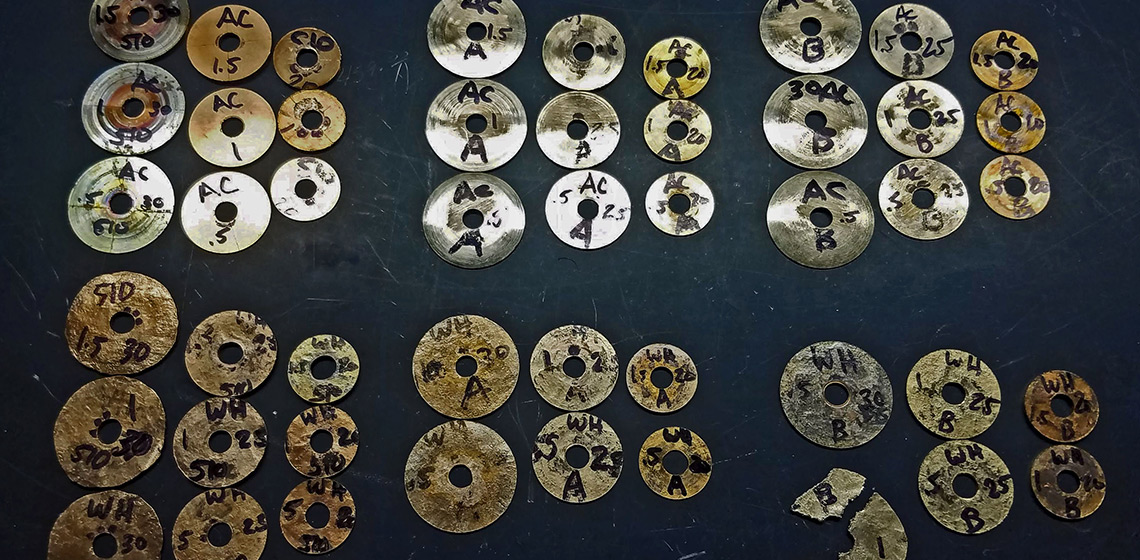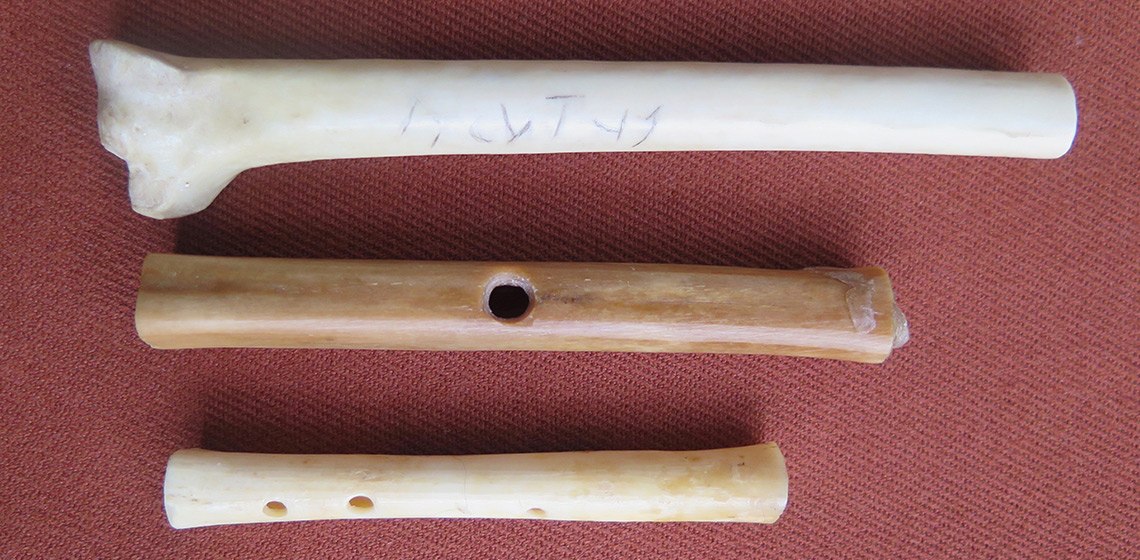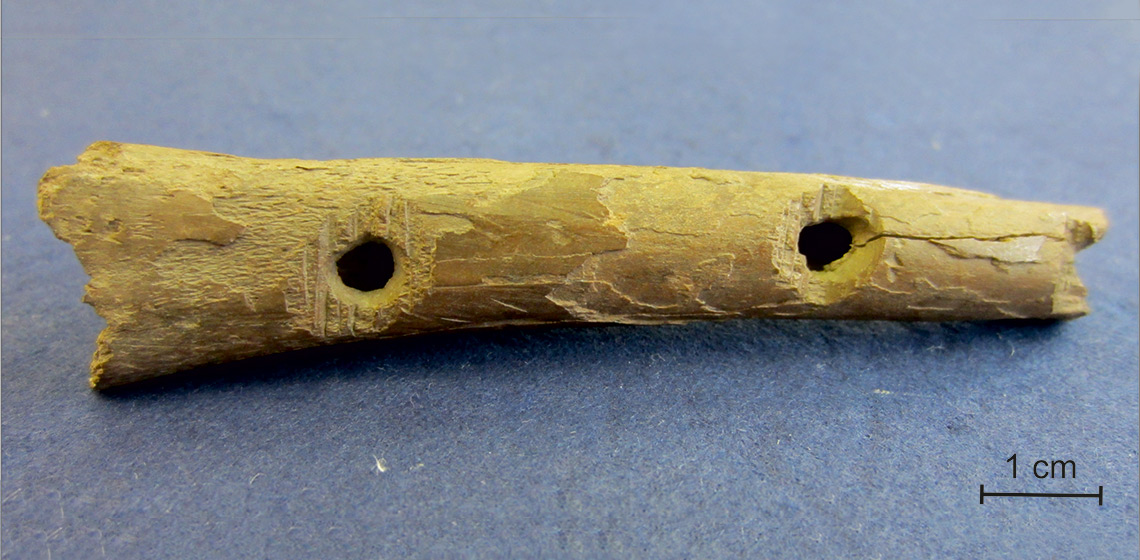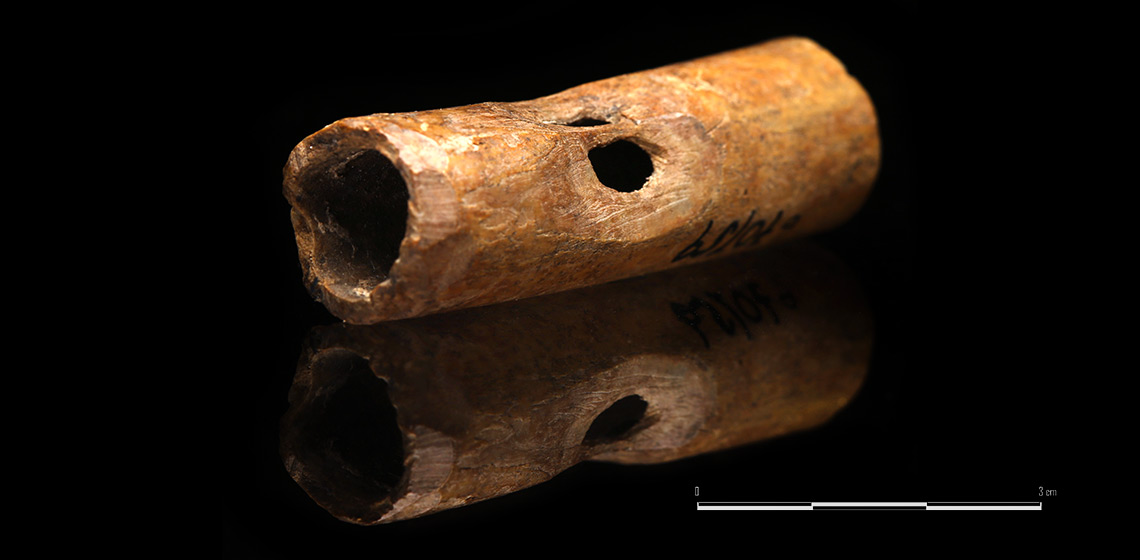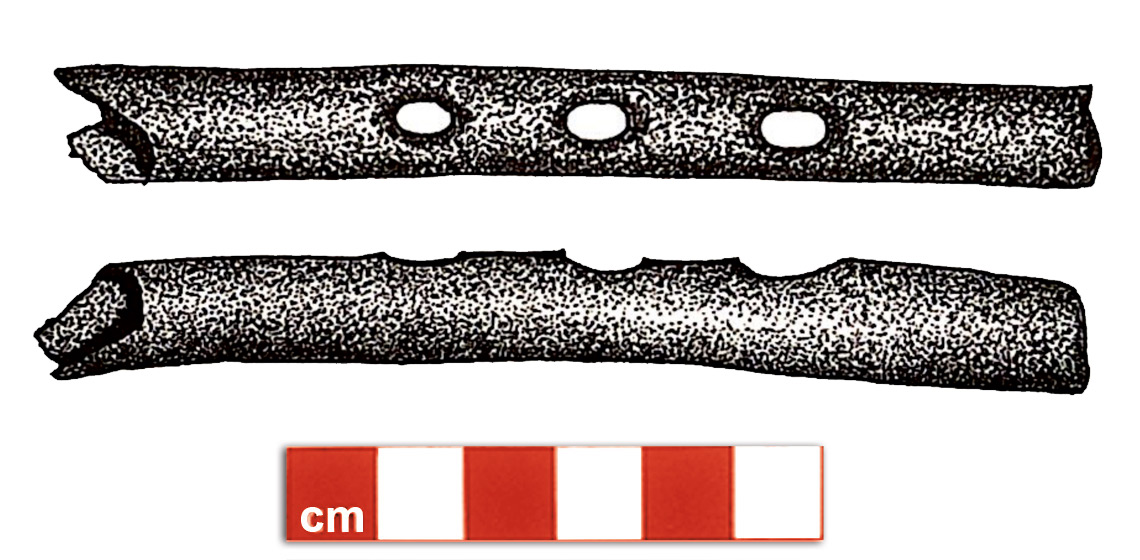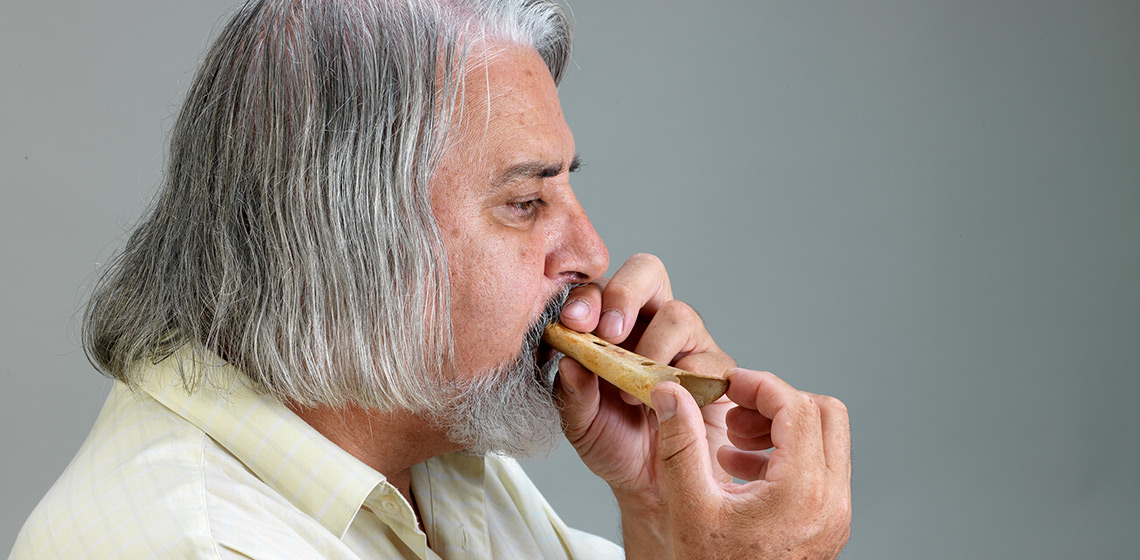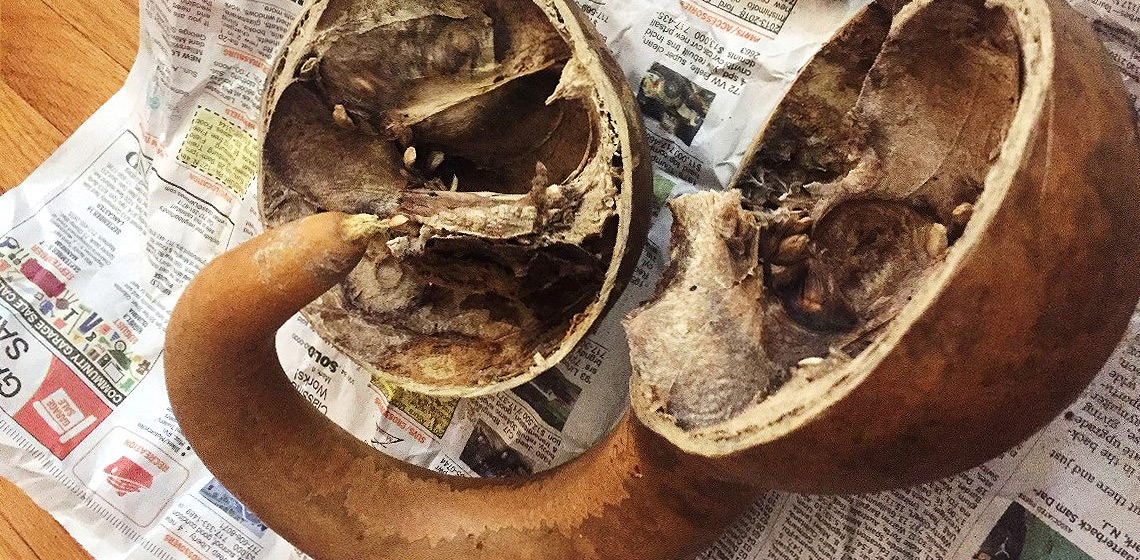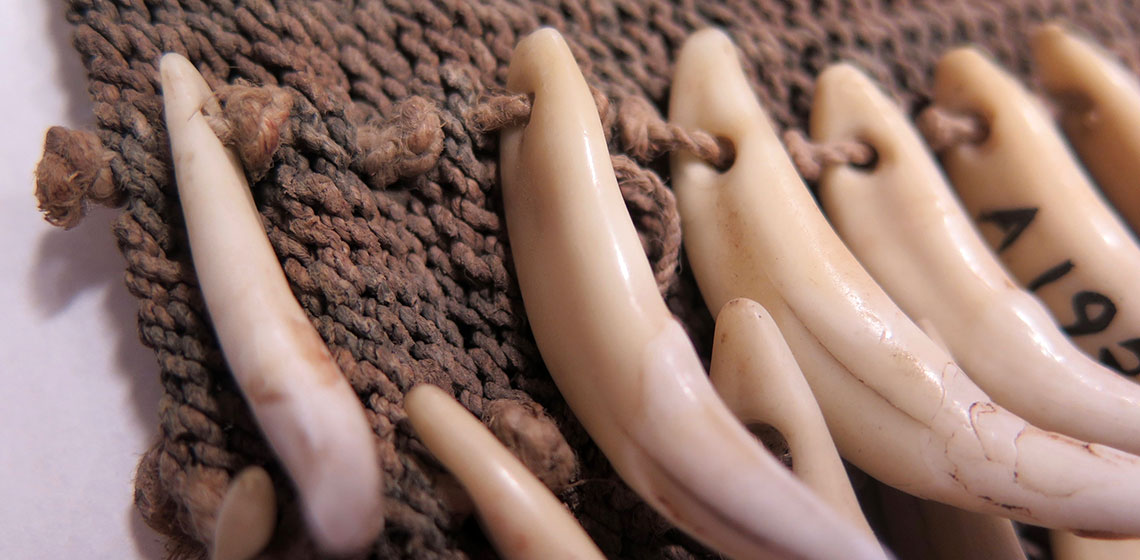music & musical instruments
Reconstruction of some String Instruments from the Ceiling Paintings of the Palatine Chapel of Palermo and the Cathedral of Cefalù, 12th Century
Publication Date
This study explores two hypotheses regarding the use of date palm (Phoenix dactylifera/Phoenix canariensis) wood for the manufacture of plucked string instruments (in this case the lute) and ceramics for bowed instruments (rabāb), drawing inspiration from exceptionally significant iconographic sources...
An Experimental Approach to Ancient Egyptian Metalworking: The Mysteries of the Sesheshet
Publication Date
Our research represents a case study in ancient metalworking to illuminate the challenges, processes, and both human and material agency behind these objects. We focus on copper alloy Hathoric loop sistra since these musical instruments are steeped in ritual and mythological connections to metalworking...
Acutus’ Eagle Bone and Two Bone Tubes with Holes Found in A Roman Fleet Base in The Netherlands - About Signalling Whistles and Animal Calls
Publication Date
At the location of a former Roman military fort and fleet base existing from AD 15-28 in Velsen, The Netherlands, more than 3000 bones and bone fragments were excavated. Three of these can be interpreted as musical instruments. Two bone tubes, of a roe deer and a stork, are provided with one and three holes respectively, on the third, a length of an eagle wing bone with one joint removed...
A Singing Bone from the Mätäjärvi (‘Rotten Lake’) Quarter of Medieval Turku, Finland: Experimental Reconstructions and Contemporary Musical Exploration
Publication Date
At the turn of the 14th and 15th centuries, in the town of Turku (SW Finland), a new quarter was built near a lake that came to be known as Mätäjärvi (‘Rotten Lake’), possibly because it was polluted by the waste from leather tanners, shoemakers, and other artisans. In the excavated remains of a wooden house in this quarter, objects like leather shoes, clippings and scrapings, imported stoneware from Germany...
Bone Pipes with Parallel Tone Holes. Materials from Medieval Poland (until the End of the 12th C)
Publication Date
Bone and wood pipes are among the medieval aerophones which have been discovered during archaeological excavations in Poland. The ones that interested us are characterized by a parallel arrangement of sound holes. They are short pipes, several centimetres long, with two holes cut in different places of the pipe body, either at one end or in the middle...
Early Medieval Bone Pipes: Understanding the Sounds of These Instruments through Reconstruction
Publication Date
Bone pipes are the most numerous instrument surviving from Early Medieval England. These instruments are usually classified as ‘flutes’ despite many of the examples missing the defining categorisations. Two examples from the archaeological record of early Medieval England will be used as case studies: one instrument from North-West Essex and the other from York...
Oakbank Dog Rose: A Working-model of an Iron Age Wooden Whistle from a Loch Tay Crannog
Publication Date
In 1980 a small piece of worked wood was discovered during excavation at Oakbank crannog in Loch Tay, Scotland. It was interpreted as a whistle by Nick Dixon. While there are several other Iron Age artefacts which have been interpreted as whistles, in Britain, this is the only one currently known to the author which is made of wood. This paper describes the manufacture and sounding of a model of this Iron Age...
Experimental Research on the Neanderthal Musical Instrument from Divje Babe I Cave (Slovenia)
Publication Date
11th EAC Trento 2019
***The supposition that an unusually perforated femur of a juvenile cave bear found at the Divje babe I Palaeolithic cave site in Slovenia could be a musical instrument led to heated debates. According to its archaeological context and chronostratigraphic position, if made by humans, it could only be attributed to Neanderthals...
***The supposition that an unusually perforated femur of a juvenile cave bear found at the Divje babe I Palaeolithic cave site in Slovenia could be a musical instrument led to heated debates. According to its archaeological context and chronostratigraphic position, if made by humans, it could only be attributed to Neanderthals...
Bottle Gourd as an Implement for the Poor in Roman Italy
Publication Date
Bottle gourds, which are thought to have originated in Africa, have been collected and cultivated in Italy since antiquity for the making of vessels and utensils, as well as food, musical instruments, and fishing buoys. Columella and Pliny the Elder both write extensively about the uses of bottle gourds, yet the importance of this vegetable in antiquity is notably absent from modern scholarship...
Animal Teeth in a Late Mesolithic Woman’s Grave, Reconstructed as a Rattling Ornament on a Baby Pouch
Publication Date
10th EAC Leiden 2017
***In one of the Late Mesolithic graves at Skateholm, Sweden, dating from 5500–4800 BC, was buried a woman together with a newborn baby. Altogether 32 perforated wild boar (Sus scrofa) teeth, along with traces of red ochre pigment, were found in this grave. We interpreted these artefacts as a rattling ornament decorating a baby pouch...
***In one of the Late Mesolithic graves at Skateholm, Sweden, dating from 5500–4800 BC, was buried a woman together with a newborn baby. Altogether 32 perforated wild boar (Sus scrofa) teeth, along with traces of red ochre pigment, were found in this grave. We interpreted these artefacts as a rattling ornament decorating a baby pouch...

